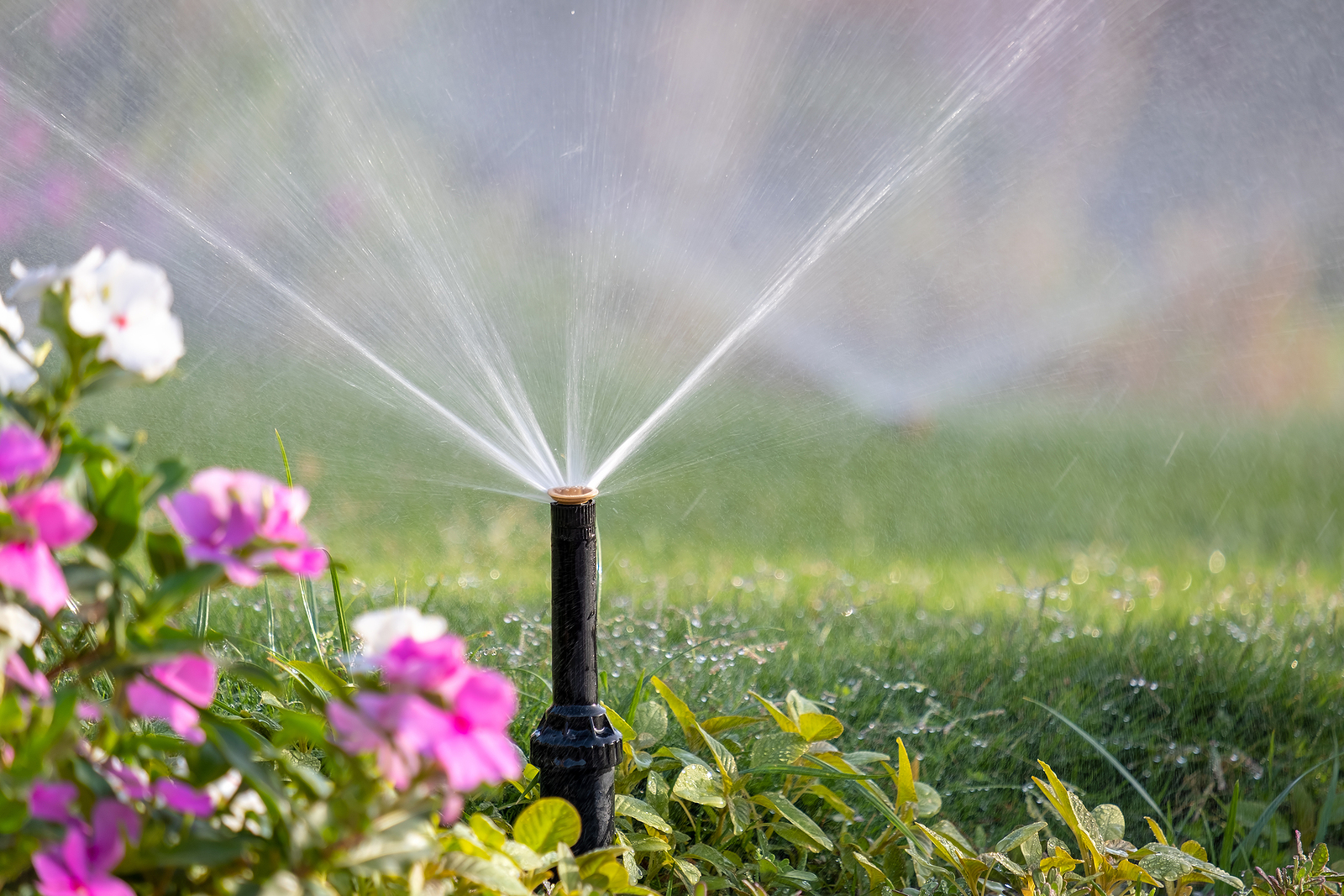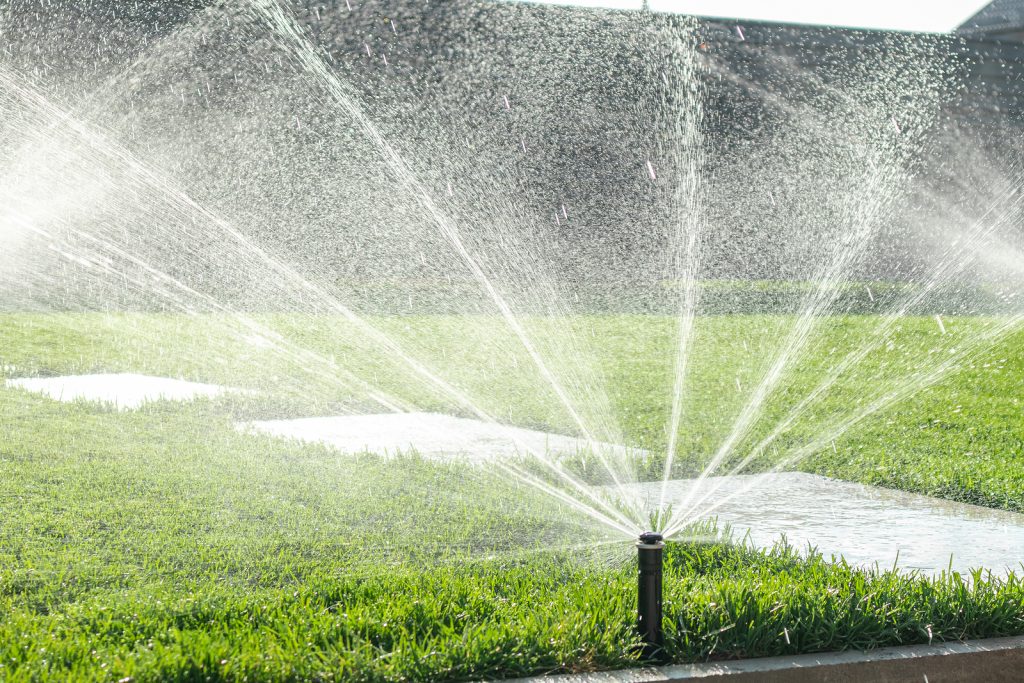
Big Rock Landscaping: Turning Sprinklers On In The Spring
It’s finally springtime, which means the sun is out, the flowers are blooming, and the trees are starting to get green again. Finally! This also means it’s time to start watering your lawn again. Turning sprinklers on in the spring can be a little tricky if you’ve never done it before. Having a few tips and tricks under your belt can make all the difference. We love to share our knowledge with fellow landscaping lovers, so here’s a few tips to help things go smoothly.
Turning Your Sprinklers On: Spring Checklist
Follow this checklist to get the most out of your garden or lawn during the spring and summer seasons.
Timing: When Should I Turn My Sprinklers On?
This is dependent on the weather and any water restrictions your city might have in place. As a general rule, you should turn on your sprinklers typically at the end of March through the first of May. The main thing is to make sure your temperatures will not go below freezing after you’ve turned on the water.
Conduct A Background Check On Your System
Although this checklist is not very technical, running through these five simple steps will help you get your system up and running as well as head off any future problems.
Step 1: Turn on the main water supply valve.
As things have been sitting all winter, turn on the main water supply very slowly, and check for any visible leaks.
Step 2: Do a “background check” on all zones.
One of the biggest mistakes homeowners make is assuming that sprinkler systems should be standardized, meaning that every zone should be running for the same length of time, on the same days, etc. This is absolutely not true. Take a couple minutes to walk around your yard when the different zones are running and take notes. Are the sprinkles pointing AT the grass? Do you have the correct nozzles and sprinkler heads? Make sure you use different zones to water and utilize different heads and nozzles to control water flow in each area. Keep in mind that shady areas need less water and sunnier areas need more.
Step 3: Run through each station in your timer box.
Check to make sure that each station comes on during its cycle. Look for and replace any broken heads and address any leaks.
Step 4: Check for puddling.
If you see water building up in your yard or window wells, this could indicate a broken pipe below the surface.
Step 5: Program your timer.
If everything appears to be running smoothly, program your timer for optimal water usage for your area and season (see our tips below!).
Optimize Your Sprinklers
Because of current drought conditions, how long you should run your sprinklers every day is under heavy debate. Our philosophy at Big Rock Landscaping is that you don’t have to tear out all your grass or go to xeriscape during a drought IF you are watering correctly!
One way to water effectively during a drought is to make sure your sprinklers are equipped with an ET (evapotranspiration) sensor. ET sensors gather information like the amount of evaporation you get from your soil, transpiration by plant materials, as well as wind and rain forecasting from local weather sources. ET sensors use this information to make real-time watering adjustments.

Sprinklers Are Working. How Much Do I Water In The Spring?
How much you need to water your garden in the spring will vary dramatically from landscape to landscape. Certain plants need a lot of water to stay healthy, while others are drought resistant. Understanding the watering needs of the plants growing in your yard is key. However, here are a few general guidelines that can help you get started.
Lawn
Most lawns need 1 to 1.5 inches of water per week. This can come from multiple sources, like rain or sprinklers. In general, you want the top 6-8 inches to be moist, but not soggy. Watering deeply is often a good rule of thumb for many lawns, as it helps establish a solid root system. However, you can water twice a week, providing that your total water amounts to 1 or 1.5 inches per week. How long will it take for your system to distribute 1 to 1.5 inches of water? Good question and the answer is different for every lawn and every sprinkler system. That said, here are two good ways to get an accurate estimate:
1. Do a tuna can test. Because tuna cans are exactly 1 inch tall, they work best for this measurement method. Mark a line ½ inch up on the inside of the tuna can with a sharpie or other waterproof marker. Place a tuna can in an area that your sprinkler hits, turn your sprinklers on, and then check the can periodically to see how long it takes for the water level in the tuna can to reach your ½ inch mark. Multiply the time it took to reach your ½ inch mark by two, and you will know how long you need to water to get the equivalent of 1 inch of water in that area of your lawn.
LEARN MORE: Start Planning Your Spring Garden Now!
2. Do the math. Every sprinkler system has a pre-established flow rate of gallons per minute. Multiply your lawn’s square footage by 0.62 gallons (this is equivalent to 1 inch of water per square foot), and then divide the total by the sprinkler flow rate. This magic number is the number of minutes you need to run your water to reach 1 inch of water saturation.
The best time to water your lawn is before 10 a.m., but the earlier, the better. Watering between 4 a.m. and 6 a.m. will help your lawn absorb water into the soil before the moisture evaporates. One last caution: be careful not to overwater or water late at night. That can be just as dangerous as underwatering. Water too little and your lawn will start to die off in yellow and brown patches, but water too much or in the evening and your lawn may fall victim to mold or disease.

Garden And Flower Beds
Typically watering your flower and garden beds one or two times per week is sufficient. Shoot for every 7 to 10 days, but only during the growing season. Flowers and garden plants require about an inch of water each week (including rainfall). However, plants in hot dry climates might need more. Pay attention to how the leaves look–if they are drooping, this is a sure sign that they need more water. How much you should water also depends on your soil type. Clay soil will retain water well, while fast draining soil like sand will need a better soak.
A good rule of thumb is to keep the top layers moist. Like grass, the best time to water flower and garden beds is in the morning, before the day really starts to heat up. When temperatures cool, you can water less, as the soil loses less water due to less evaporation during winter months.
Lastly, invest in mulch to insulate the plant roots and prevent evaporation. A little mulch goes a long way in terms of keeping your soil moist. Also, invest in an irrigation system that will deliver water right to the roots of your plant.

Shrubs
How much should you water your shrubs? Simple question. Not a simple answer. The conditions of every landscape are unique. Even if you live in similar areas, the answer will depend on your local climate, the weather, your particular soil condition, among other factors.
In general, woody shrubs and trees can grow deeper root systems than flowers or garden plants. They can access water from a wider depth and volume of soil. If you receive good rain every week for 10 days, these woody plants are most likely getting all the water they need. However, if you live in a desert climate, or are receiving less rain than usual, you might need to supplement with a water schedule. Most shrubs thrive with a deep watering that occurs less frequently than most flowers or garden plants.
When watering, apply water slowly and right at the root system. Double-check to make sure that water is penetrating the soil and not running off. A general rule of thumb for watering shrubs is once a week to provide a good soaking. This is best done using a drip irrigation system. It is absolutely necessary that the water reaches the plant’s roots. Do not water deeper than the plant’s root zone, as this is unnecessary and wastes water.
Lastly, the best way to gauge whether or not you are watering appropriately, is to check the soil around your plants. An easy way to do this is to insert a screwdriver into the ground near the roots of your plant. If it cannot easily penetrate the soil to 3-4 inches, you likely need more water. Don’t get too discouraged, this might take a bit of trial and error, but with a little observation and tweaking, you can get your shrubs the water they need to thrive in your landscape.
Big Rock Landscaping: Your Utah Landscaping Services Experts
Watering your lawn and plants can seem like a daunting task, especially if you are knee deep into a prolonged drought. When homeowners are facing drought conditions, it requires some auditing of your current system and more hands-on management of your watering. If you prefer a “set it and forget it” process to manage your landscaping, it might make sense to make your yard more drought tolerant and consider replacing some of your thirsty areas with more hearty, drought-friendly plants and xeriscape.
And, if you feel like you want to transfer this responsibility into the capable hands of a professional, just give us a shout. When it comes to landscaping, there are a lot of things to consider – from the type of plants you want in your landscape to how much you should water them. That’s why it’s important to get expert advice when planning your landscaping project.
If you’re like most people, you probably don’t have time to learn how to do everything yourself. That’s where we come in–Big Rock Landscaping can help with all the things that fall into the landscaping bucket, including (but not limited to) turning on your sprinklers.


Leave a Reply
You must be logged in to post a comment.